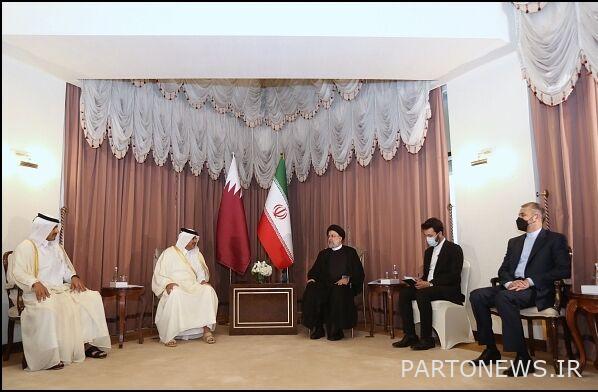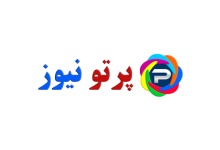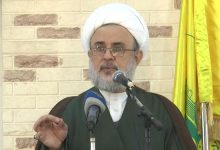The shadow of economic diplomacy on Tehran’s relations with its neighbors

In the first half of 1400, with the holding of presidential elections in Iran and the change of government, the approach to foreign policy also changed. Although the thirteenth government put on the agenda the principle of balancing foreign relations and looking at the West and the East at the same time, at both the level of slogans and action, the neighbors and countries of the region were given priority.
Therefore, last year, the development and deepening of relations with neighbors such as Iraq, Syria, Afghanistan, Pakistan, Turkey, Azerbaijan, Armenia and the Persian Gulf countries were also on the agenda during this period. For this reason, focusing on “balanced diplomacy”, “economic multilateralism”, “entering into strategic alliances with emerging powers”, strengthening “neighborhood policy” and developing bilateral and multilateral relations with 15 neighbors of the Islamic Republic of Iran were at the top of the agenda and the direction of actions. Government diplomacy was set up last year to implement this policy.
Tehran’s prominent role with the aim of Afghanistan emerging from the crisis
Afghanistan experienced one of its biggest political developments last year; The year ended with the withdrawal of the United States from the country after two decades of occupation and Taliban domination.
In addition to accepting some three million Afghan refugees in recent years, Tehran has always played an active role in establishing peace and stability in this friendly and neighboring country, even in the post-Taliban era.
In addition to accepting about three million Afghan refugees in recent years, Tehran has always played an active role in establishing peace and stability in this friendly and neighboring country.
Following the Moscow trilateral meetings on the developments in Afghanistan, the second meeting of the Foreign Ministers of Afghanistan’s neighbors was held on 5 November last year at the Ministry of Foreign Affairs with the presence of First Vice President Mohammad Mokhber, Foreign Minister Amir Abdullahian and Foreign Ministers of Uzbekistan, China, Turkmenistan and Tajikistan. And Pakistan was held. The meeting was attended by the Foreign Ministers of China and Russia, as well as the Secretary-General of the United Nations, Antonio Guterres.
Subsequently, we witnessed the arrival of a four-member economic and political delegation to Tehran with Rumi “Amir Khan Mottaqi”, the acting Minister of Foreign Affairs of Afghanistan; The trip, which began on Saturday, January 26, during which talks on trade, economy, security and transit were positive.
Iran’s implementation of the principle of good neighborliness continued last year as the Biden government continued to impose irreparable costs on the people of war-torn Iran, such as strengthening terrorist groups, economic collapse, and a flood of immigrants, to get rid of the self-made swamp.
Restoration of relations with Arab states and continuation of Tehran-Riyadh negotiations
Last year, in the eyes of the 13th government, the world’s neighbors, neighbors and Arab countries were given priority, for example, the diplomatic tour of the helm of the Iranian Ministry of Foreign Affairs to a number of these countries, including Syria, Iraq, Oman and Qatar.
For example, Amir Abdullahian in his trips to Oman and Qatar, these trips were accompanied by tangible and significant achievements in the economic field and the expansion of bilateral relations. During these trips, there was an opportunity for the two sides to discuss political, economic, and cultural issues, as well as regional issues, and to explore ways to strengthen bilateral relations.
Diplomatic talks with Arab governments in the region have been ongoing in the past, such as Iran’s effective participation in the “Iraq Regional Support Summit” held in September; The meeting was attended by representatives of nine countries: Egypt, Iran, Saudi Arabia, Jordan, Qatar, UAE, Kuwait, Turkey and France.
Last year, the 13th government saw the world’s neighbors, neighbors and Arab countries as a priority, as exemplified by the Foreign Ministry’s diplomatic tour of a number of countries, including Syria, Iraq, Oman and Qatar.
The resumption of talks between Iran and Saudi Arabia, which have experienced strained relations for the past six years, was another achievement of the government last year. Last year, in addition to the sincere and peaceful tone of the officials of Tehran and Riyadh, four rounds of meetings were held between the officials of the two countries, and the fifth round of talks is likely to be held in the near future.
Khatibzadeh said in a press conference on Monday morning, January 11, in response to a question about the timing of a new round of Iran-Saudi talks: “A new round of Iran-Saudi talks hosted by Iraq is on the agenda, and we tried to The basis of the expediency of distancing in different places, to continue our stable relations and conversations with openness and effort.
Also, “Jalil Rahimi Jahanabadi,” a member of the National Security and Foreign Policy Committee of the Iranian Parliament, wrote in a message on his official Twitter account on Saturday, January 16: “Relations between Iran and Saudi Arabia are being revived and embassies are preparing to reopen. . »
Overall, although some problems and tensions between Tehran and Riyadh remain, the quadripartite talks should be seen as a turning point in overcoming the stalemate between the two countries in the Middle East system.
From the observers’ point of view, holding four rounds of talks between Iranian and Saudi officials and the readiness of the parties to form the fifth round of talks hosted by Baghdad, optimisms about the two governments overcoming the existing deadlock and transition from conflict and tension to limited cooperation to the media and Public opinion is drawn.
Deepening Tehran-Doha relations with 14 cooperation documents
Last year, we witnessed numerous trips of Iranian and Qatari government officials and diplomats to each other. The two-day visit of our President to Qatar ended in early March, while the signing of 14 cooperation documents and active participation in the “Assembly of Gas Exporting Countries” (GECF) were among the most important achievements of this trip; The achievements showed that the thirteenth government is determined to expand cooperation with neighboring countries and the region.
The signing of 14 cooperation documents as well as active participation in the “Assembly of Gas Exporting Countries” (GECF) was one of the most important achievements of the main visit to Qatar; The achievements showed that the thirteenth government is determined to expand cooperation with neighboring countries and the region
During a major visit to Qatar, the two countries signed 14 cooperation documents in eight areas, as well as an energy agreement between Iran and Venezuela; Memorandums of Understanding on Media and Culture, Consular and Diplomatic Cooperation, Energy, Ports and Maritime Affairs, Education, Sports and Youth, Tourism, and Economics and Trade.
Of course, 5 to 7 memorandums were supposed to be signed during this trip, but due to the close cooperation of the delegations and high-level relations between the two countries, their number reached 14 memoranda and documents, which in fact reflected the objective policy of the people’s government based on diplomacy. Was a neighborhood activist.
The first executive program of the cultural and artistic agreement between the two countries for two years, the executive program of radio and television cooperation between the Broadcasting Organization of the Islamic Republic of Iran and the Qatar Media Institute were two memorandums signed on media and culture.
In the field of consular and diplomatic cooperation, there are three agreements on visa waiver for diplomatic travel, especially between the governments of the two countries, a memorandum on political consultations on matters of mutual interest and the foreign ministries of Iran and Qatar, and a memorandum on diplomatic education between the Center for Political and International Studies. Attached to the Ministry of Foreign Affairs of Iran and the Diplomatic Scientific Centers affiliated to the Ministry of Foreign Affairs of Qatar were signed by the foreign policy officials of the two countries.
The title of the memorandum signed in the energy sector was a joint memorandum between Tavanir Iran Company and the Qatar General Institute of Electricity and Water.
Joint agreement on maritime transport between Iran and Qatar, agreement between Qatari management companies (Qatar Port) and the Iranian Institute of Maritime Affairs and Port Affairs, as well as a joint cooperation agreement between the two countries on land, three agreements between Iran and Qatar in the field of ports. And was considered a sailor.
Iran and Qatar also signed an agreement on cooperation in education, higher education and scientific research.
The first implementation of the agreement and joint cooperation on youth and sports for two years is a memorandum signed between the Ministry of Sports and Youth, and in the field of tourism, an agreement on tourism was signed between the two governments of the Islamic Republic of Iran and Qatar.
The two countries’ economic ministers also signed an agreement on joint cooperation on free zones between the Supreme Council of Industrial and Special Economic Zones of the Islamic Republic of Iran and the Qatar Free Zones Institute and a standard cooperation agreement between the National Standards Organization of Iran and the Qatar General Institute of Standards.
Tripartite gas swaps and transit agreements with neighbors
One of the most important and important events of 1400 is the effective presence of the President in the regional summit in which the neighboring countries are members.
Examples include Iran’s active participation in the ECO Economic Summit and the development of economic relations with member states, the signing of a trilateral gas swap agreement with Turkmenistan and Azerbaijan, and the conclusion of transit agreements with Pakistan, Azerbaijan, Kyrgyzstan, Turkmenistan and Azerbaijan. کرد.
In this regard, the President recently recalled his visit to Turkmenistan and participation in the ECO Summit, saying: “We had a problem with Turkmenistan for 5 years. With this trip, both communication and transit issues were resolved. “A gas swap agreement was also established between Turkmenistan, Iran and Azerbaijan, and this agreement could be a good ground for making Iran a regional transit hub.”
Iran’s $ 46 billion trade with 15 neighbors
Since the beginning of the 13th government and the positive steps taken in the field of interaction with various countries, especially neighbors and balanced diplomacy, we have witnessed a relative boom in foreign trade so that Iran’s foreign trade volume in the 11 months of 1400 more than 90 billion dollars It was about 40% more than in 1999.
However, despite the sanctions and obstacles created by the enemies over financial exchanges, 73% of the total export currency has been returned to the country in various ways. Since the beginning of the government, 6 business centers have been established in Turkey, Armenia, UAE, Pakistan, Syria and China, and the opening of business centers in some other countries is also on the agenda.
Customs spokesman Ruhollah Latifi described Iran’s trade situation with 15 neighboring countries in the first 11 months of 1400, which showed that it had reached $ 46.2 billion, up from 32.4 billion in the same period last year. It was a billion and has increased by nearly $ 14 billion.
Customs spokesman Ruhollah Latifi described Iran’s trade situation with 15 neighboring countries in the first 11 months of 1400, which showed that the figure had reached $ 46.2 billion, up from 32 in the same period last year. It was 4. billion and has increased by nearly $ 14 billionAccording to this report, from the beginning of the year to the end of February, 92 million 256 thousand 219 tons of goods worth 46 billion 245 million 716 thousand 63 dollars were exchanged between Iran and 15 neighboring countries, which compared to the same period last year. 16 million 712 thousand tons of goods and 13 billion 783 million dollars more were exchanged, which was accompanied by a 22% growth in weight and 42% in the value of traded goods.
Also, 70 million 259 thousand 636 tons of goods worth 23 billion 528 million 428 thousand 257 dollars were the share of Iran’s exports to neighboring countries, which increased by 13% in weight and 28% in value compared to the same period.
In terms of exports to neighboring countries, Iraq with 8 billion 222 million dollars and a growth of 20 percent, Turkey with 5 billion 607 million dollars and a growth of 151 percent, the UAE with 1 billion 912 million dollars and a growth of 1 percent, Afghanistan with a Billion and 655 million dollars and a decrease of 21 percent and Pakistan with 1 billion and 129 million dollars and a growth of 25 percent, respectively, were the five destinations for the export of Iranian goods to neighbors.
According to the report, Oman with $ 638 million and growth of 63%, Russia with $ 539 million and growth of 20%, Azerbaijan with $ 492 million and growth of 5%, Turkmenistan with $ 300 million and growth of 160%, Armenia with $ 279 million and decrease Two percent, Kazakhstan with $ 165 million and growth of 43 percent, Kuwait with $ 139 million (unchanged), Qatar with $ 125 million and a decrease of 21 percent, Bahrain with $ 8.1 million and growth of 11 percent and Saudi Arabia with $ 429,000 In the next ranks of buying Iranian goods are among the neighbors.
Imports from neighboring countries were such that from the beginning of the year to the end of February, 21 million 996 thousand 583 tons of goods worth 22 billion 717 million 287 thousand 806 dollars, the goods needed by the country were supplied through neighboring countries. Compared to the same period, it has increased by 65% in weight and 62% in value.
Accordingly, the UAE with sales of 14 billion and 566 million dollars and a growth of 72 percent, Turkey with 4 billion and 703 million dollars and growth of 22 percent, Russia with 1 billion and 451 million dollars and growth of 52 percent, Iraq with 1 billion and 49 percent. Million dollars and 780 percent growth and Oman with 515 million dollars and growth of 27 percent, the five countries supplied the goods needed by the country among its neighbors.
Pakistan with $ 251.6 million and growth of 58%, Kazakhstan with $ 56.3 million and growth of 57%, Azerbaijan with $ 35.8 million and growth of 66%, Turkmenistan with $ 30 million and growth of 64%, Armenia with 18%. $ 2 million and 21 percent growth, Afghanistan with $ 17.9 million and growth of 476 percent, Kuwait with $ 13.3 million and growth of 94 percent, Qatar with $ 7.8 million and a decrease of one percent and Bahrain with $ 1.4 million And a growth of 379 percent, respectively, other suppliers of goods needed by the country among the neighbors in the 11 months of 1400.
From the observers’ point of view, given the achievements of the government’s performance in the field of neighborhood relations, one can expect the development of relations in 1401; This year, economic diplomacy is still at the top of the government’s agenda.

